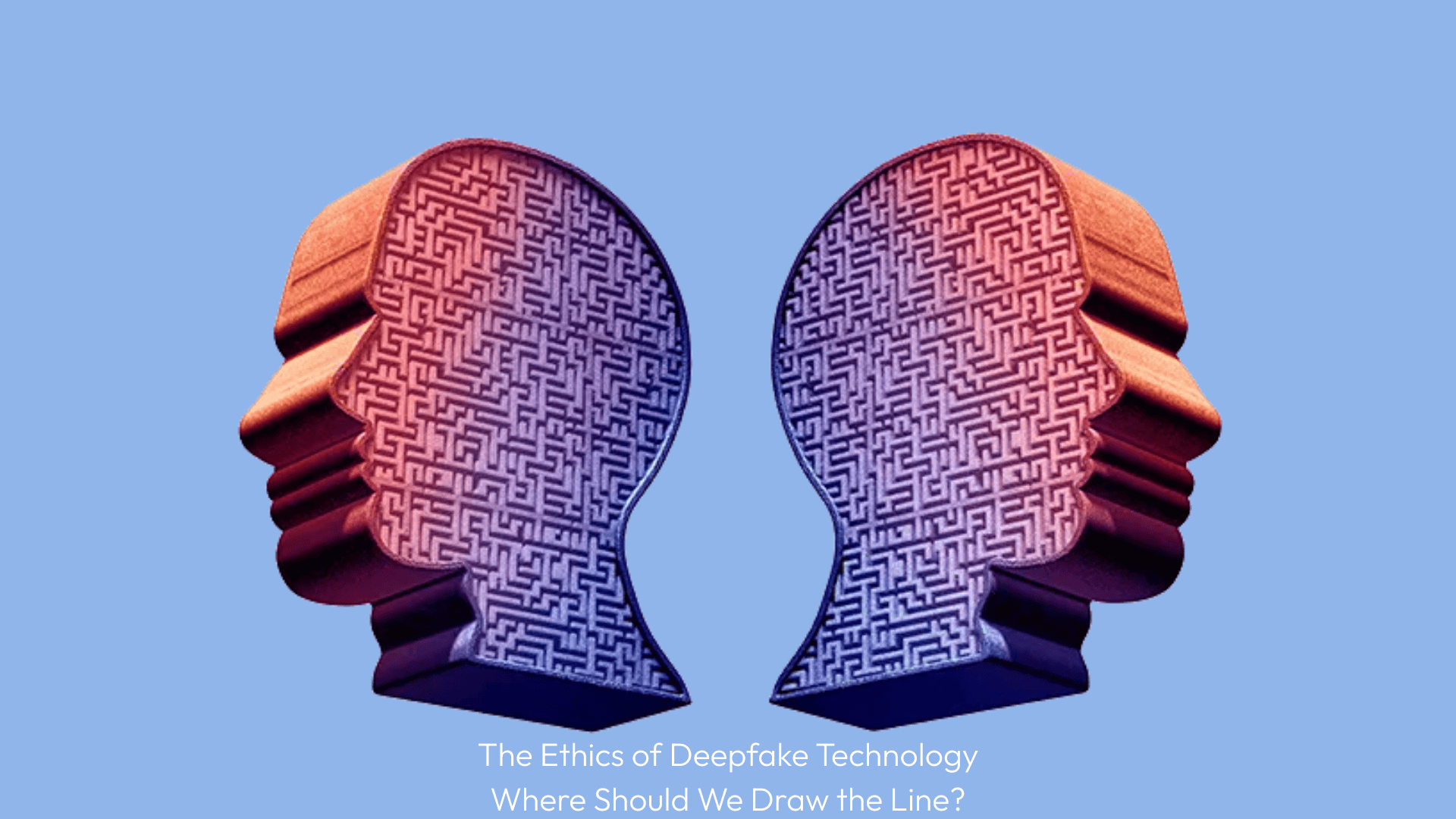Deepfake technology has taken the world by storm, blurring the line between reality and artificial intelligence. While it offers exciting entertainment, education, and creativity possibilities, it also raises grave ethical concerns—from misinformation and identity theft to political manipulation and consent violations.
So, where should we draw the line? Can we harness deepfake technology responsibly, or is it a tool too dangerous to control?
What Are Deepfakes and How Do They Work?
Deepfakes use artificial intelligence (AI) and deep learning to manipulate videos, images, and audio, making it appear that someone is saying or doing something they never actually did.
How Deepfake AI Works:
- A Generative Adversarial Network (GAN) analyzes thousands of images/videos to understand facial movements, voice patterns, and gestures.
- The AI generates a synthetic version of the target’s face and voice, overlaying it onto an existing video or creating an entirely new one.
- Advanced AI models refine realism, making detection difficult.
🔍 Example: A deepfake video could make it look like a world leader is declaring war—even if they never spoke those words.
The Positive Uses of Deepfake Technology
✅ Entertainment & Film Industry 🎬
- Studios can digitally recreate deceased actors or de-age characters in movies.
- AI-generated voices can help restore lost dialogue for actors who passed away.
✅ Education & Historical Reconstruction 📚
- Museums use deepfakes to bring historical figures to life, allowing people to see realistic reenactments.
- AI-generated voices can help preserve extinct languages.
✅ Accessibility for People with Disabilities ♿
- Voice deepfakes help recreate voices for individuals who have lost speech.
- AI-generated sign language avatars assist in breaking communication barriers.
✅ Creative Expression & Marketing 🎨
- Brands use deepfake ads for hyper-personalized experiences.
- Content creators experiment with deepfake characters for innovative storytelling.
The Ethical & Dangerous Side of Deepfakes
❌ Misinformation & Fake News 📰
- Deepfake videos can spread false information, leading to political manipulation or financial fraud.
- Example: A fake CEO video announcing a company’s bankruptcy could crash stock prices.
❌ Identity Theft & Fraud 💳
- Cybercriminals can clone a person’s voice and face to bypass security systems.
- Example: Scammers used AI-generated voices to trick employees into transferring money to fake accounts.
❌ Non-Consensual Deepfakes & Privacy Violations 🚫
- Fake explicit videos of celebrities and private individuals have emerged, causing severe reputational damage.
- Example: Deepfake technology has been misused to create fake pornography of real people without their consent.
❌ Erosion of Trust in Digital Media 🔎
- As deepfakes become more realistic, people may lose trust in videos, news, and evidence.
- Example: A real video of a politician admitting wrongdoing could be dismissed as a “deepfake,” allowing people to deny reality.
Where Should We Draw the Line? Ethical Considerations
🔹 Strict Regulations & Legal Actions
- Governments must define clear laws against malicious deepfake use.
- Platforms like YouTube, TikTok, and Twitter need better AI deepfake detection tools.
🔹 Watermarking & Deepfake Detection AI
- Ethical deepfake creators should add watermarks or metadata tags to indicate AI-generated content.
- Tech companies must develop better AI detection software to flag fake media.
🔹 Consent-Based AI Usage
- Using someone’s face or voice should require their explicit consent.
- Social media sites should ban unauthorized deepfake content.
🔹 Raising Public Awareness
- People must be educated on how to spot deepfakes and verify information before believing or sharing content.
The Future of Deepfake Technology: A Blessing or a Curse?
Deepfake technology is a double-edged sword—it has groundbreaking potential and serious risks. Ethical guidelines, strong regulations, and better detection systems are key to responsible AI use.
🔥 The Big Question: Should deepfake creation be strictly controlled or wholly banned?
Let us know your thoughts in the comments!

